Top 10 Video Production Equipment
by Arthur Yang October 24, 2023
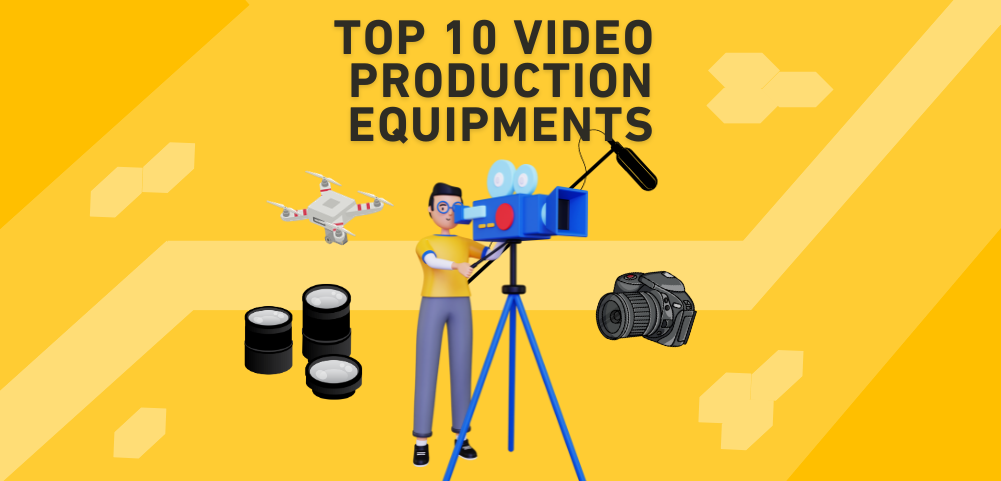
In the dynamic world of video production, a seamless blend of creativity and technology transforms concepts into captivating visual stories.
From powerful cameras and stabilising tools to innovative editing software, each element plays a vital role.
Let’s explore the Top 10 Video Production Equipments that shape the magic of filmmaking and storytelling.
Top 10 Video Production Equipments
Top 10 Video Production Equipments
Top 10 Video Production Equipments
Top 10 Video Production Equipments
#1 — Camera

In the realm of video production, the choice of camera stands as a pivotal decision, shaping the quality and visual appeal of your project.
Firstly, the ubiquitous phone camera, present in nearly every pocket, offers convenience for spontaneous shooting, ideal for capturing moments on the go.
Moving up the hierarchy, the DSLR (Digital Single-Lens Reflex) camera provides enthusiasts and budding filmmakers with versatility.
Its interchangeable lenses and larger sensors enable precise control over depth of field and low-light performance, rendering crisp, cinematic shots.
At the pinnacle of professional cinematography, the RED camera reigns supreme.
Revered for its exceptional image quality and flexibility, the RED camera captures footage in stunning resolutions, allowing filmmakers to push creative boundaries.
Each of these options caters to diverse needs, from casual recording to high-end film production, exemplifying the spectrum of choices available in the world of video production equipment.
#2 — Lenses
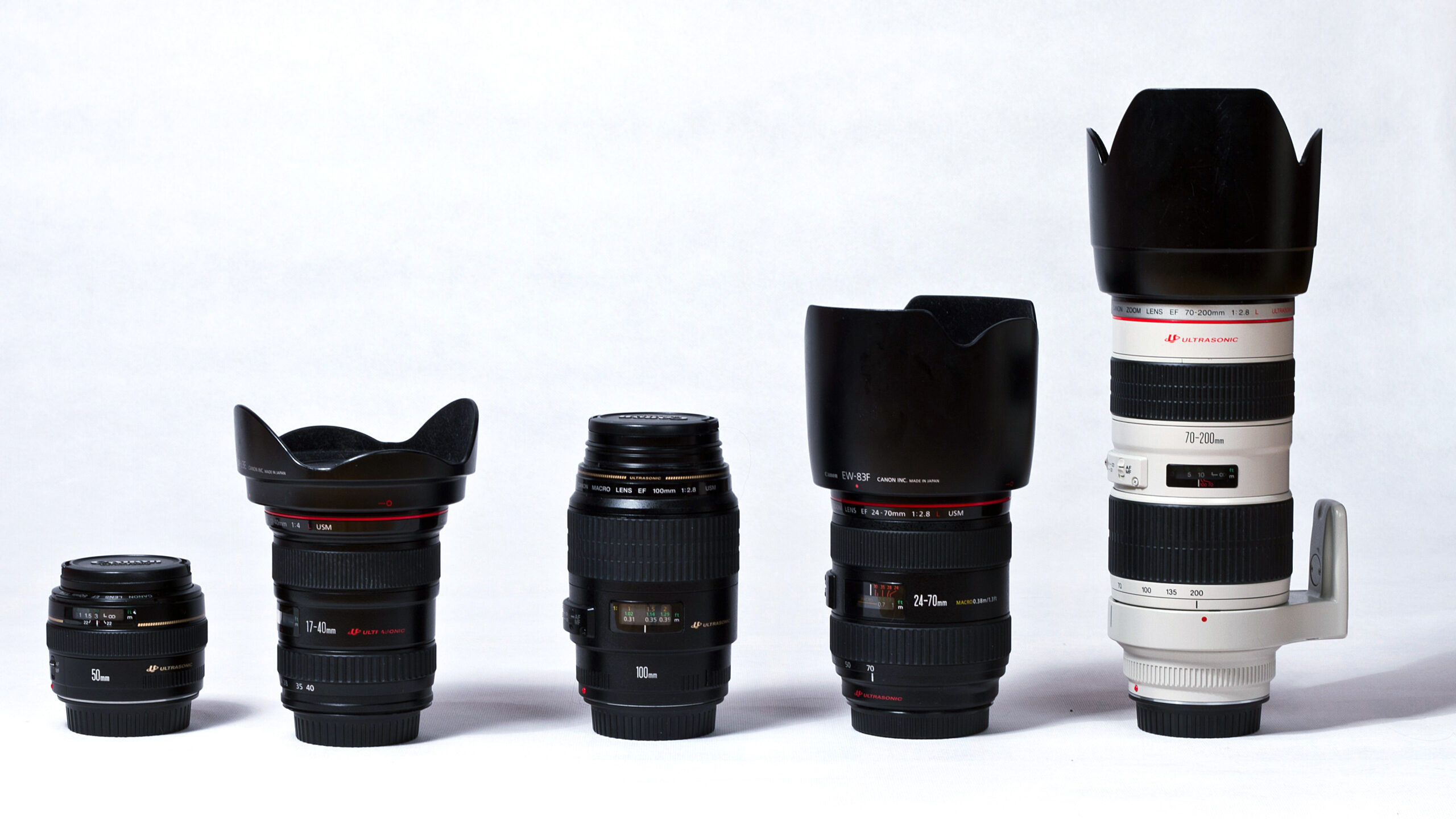
Lenses, the unassuming heroes behind captivating visuals, play a pivotal role in video production.
Essentially, a lens is a transparent piece of glass or plastic that focuses light, allowing your camera to capture clear and detailed images.
Different lenses offer various perspectives, making them essential tools for filmmakers and photographers alike.
Prime lenses, with fixed focal lengths, provide sharpness and clarity, making them ideal for portrait and low-light shots.
Zoom lenses, on the other hand, offer versatility by allowing you to zoom in and out without changing the lens, making them excellent for capturing dynamic scenes from a distance.
Wide-angle lenses expand your frame, capturing more of the surroundings, making them perfect for landscapes or tight spaces.
Each type of lens brings a unique visual character to your footage, allowing you to craft compelling narratives and stunning visuals, making them indispensable elements in the video production toolkit.
#3 — Microphone
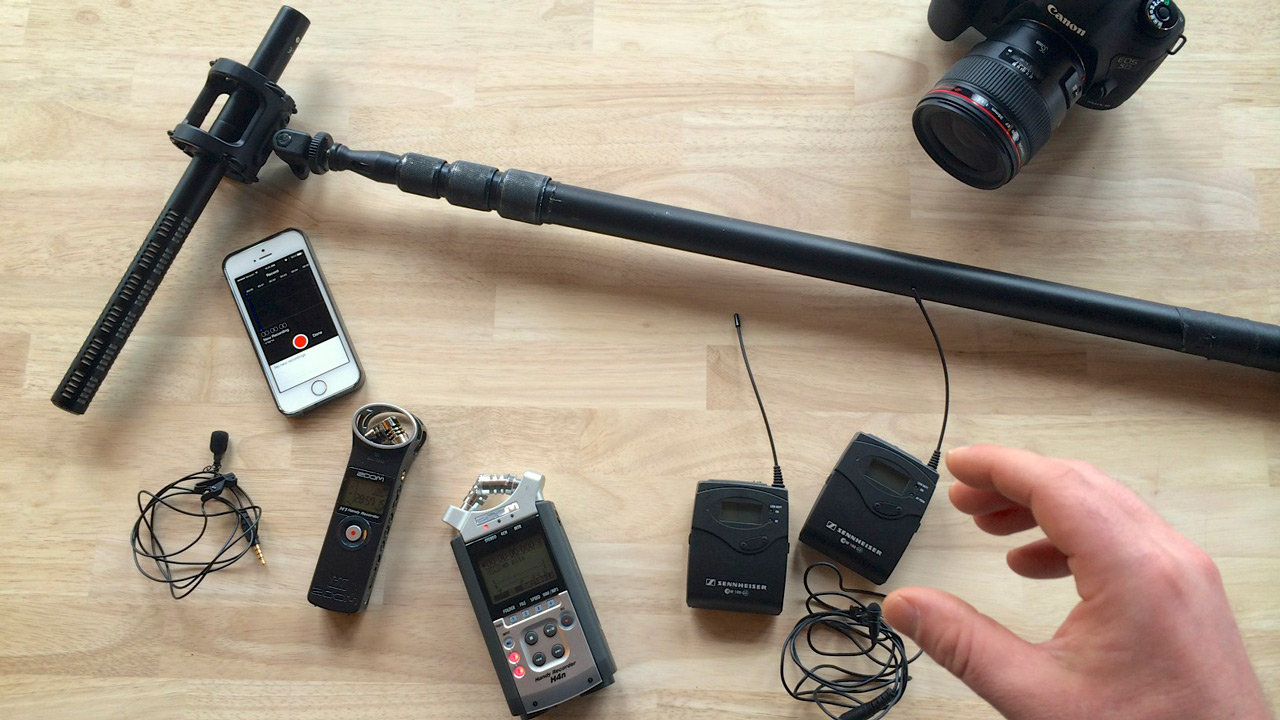
In video production, microphones are essential for capturing clear audio.
Their job is to convert sound into electrical signals that can be recorded.
Whether you’re filming interviews, dialogues, or ambient sounds, a good microphone ensures that every word and noise is picked up accurately.
Without a microphone, videos risk having muffled or distorted audio, which can significantly impact the viewer’s experience.
Clear audio is crucial for understanding dialogue and creating a realistic atmosphere.
To integrate a microphone into your camera setup, simply plug it into an audio port on your camera.
Most cameras come with a designated microphone input, often a 3.5mm jack.
Essentially, microphones are the ears of the production process, capturing the sounds that bring a video to life.
They’re necessary tools for ensuring the audience hears everything as intended, making them vital in any video creator’s toolkit.
#4 — Light Source

Light sources in the realm of video production are the fundamental elements that illuminate scenes, shaping the mood, visibility, and overall ambiance of the footage.
One of the primary light sources used is the key light, which is the primary and brightest source illuminating the subject.
Positioned strategically, it provides the main illumination, defining the subject’s features and bringing them into focus.
Additionally, fill lights complement the key light by reducing shadows and providing a balanced illumination.
Another popular choice is the ring light, often used in portrait photography and vlogging.
Its unique circular design produces an even, shadow-free illumination, creating a captivating halo effect in the eyes of the subject.
If you don’t have any, you can always use natural light, which offers a soft, diffused illumination that adds a touch of authenticity to any setting.
These light sources, among others, are crucial tools in a filmmaker’s arsenal, ensuring scenes are well-lit, enhancing visual clarity, and contributing to the overall impact of the visual narrative.
#5 — Diffuser
Diffusers in the realm of video production are invaluable tools designed to refine and soften the harshness of light emitted from sources.
Their purpose is to scatter and diffuse light evenly, reducing intense highlights and shadows.
Diffusers serve as a solution to the problem of overly bright or stark lighting, especially in situations where natural or artificial light is too direct or harsh.
By placing a diffuser in front of a light source, be it natural sunlight or artificial lights like LEDs or strobes, the resulting effect is a gentle, even illumination that envelops the subject or scene.
This softening effect creates a natural, flattering glow on subjects, enhancing facial features and minimising imperfections.
Diffusers, therefore, play a crucial role in creating a visually pleasing and professional look.
They harmonise with light sources, transforming intense illumination into a softer, more pleasant glow, ultimately contributing to the overall aesthetic and mood of the visual narrative.
Top 10 Useful Tools for Creatives
#6 — Tripod Mount
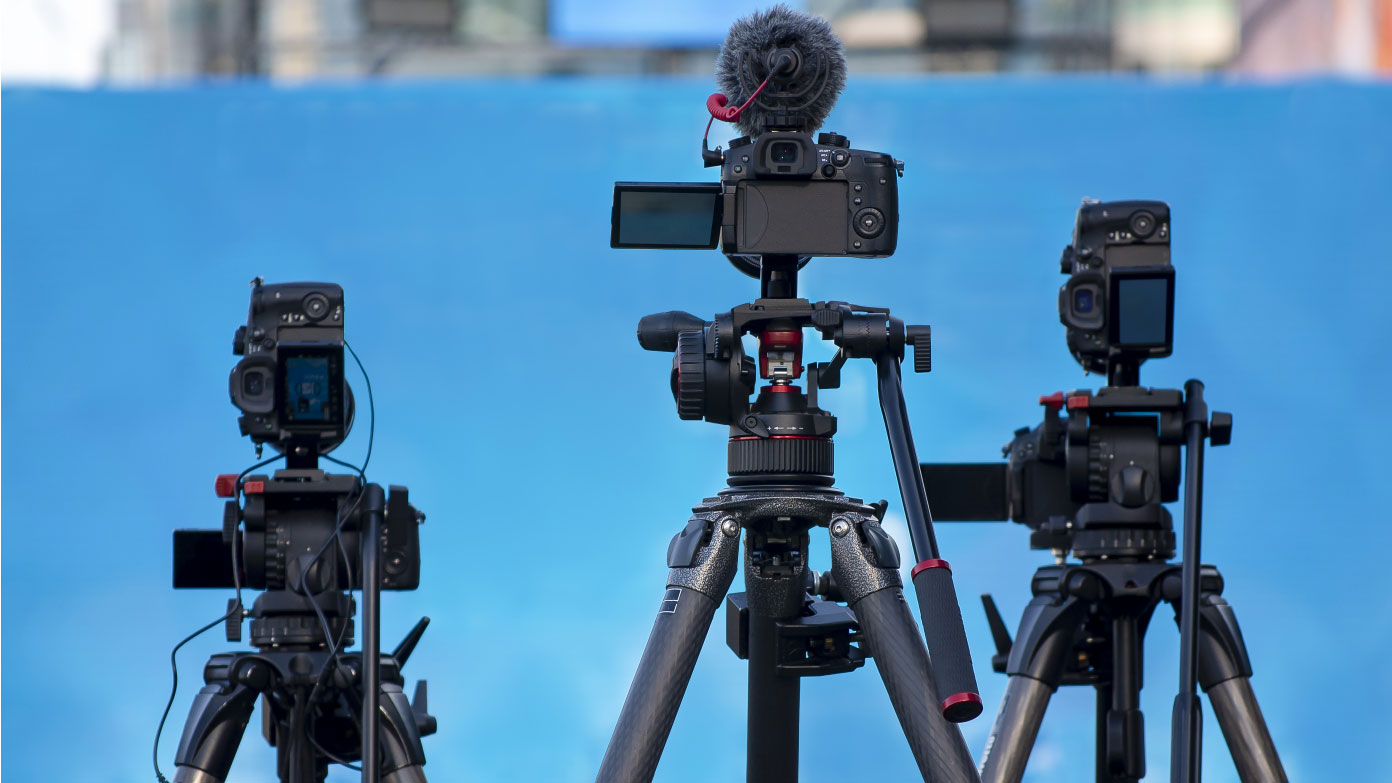
Tripod mount with camera attached
A tripod mount is a fundamental tool in the world of video production, providing stability and precision to cameras during shooting.
It consists of three adjustable legs and a mount at the top to secure the camera.
Its primary purpose is to eliminate shaky footage, ensuring steady and clear shots.
Using a tripod mount is especially crucial for capturing scenes requiring long exposure, zooming, or panning, where even the slightest movement can result in blurred images.
By providing a stable platform, it allows filmmakers and photographers to focus on composition and framing without worrying about shaky visuals.
The tripod mount is essential for capturing professional-grade videos, enabling smooth camera movements and ensuring the final footage is visually appealing and jitter-free.
We recommend the Ulanzi TT09 tripod for its compactness and portability.
#7 — Gimbal
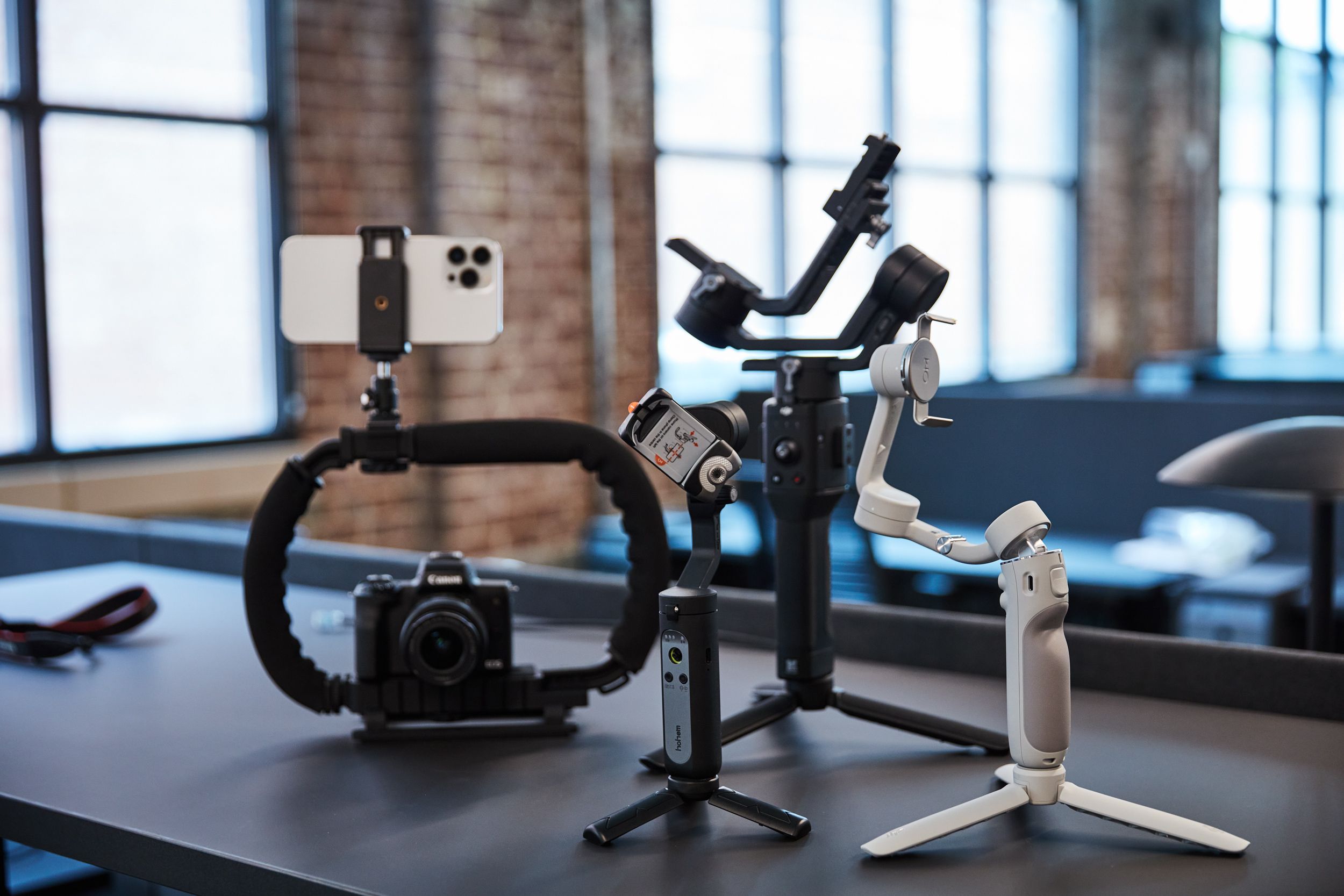
Gimbal stands for smartphones
In contrast to a tripod mount, a gimbal is a more advanced stabilisation tool designed for capturing fluid and dynamic shots.
It consists of motors and sensors that keep the camera steady regardless of movement.
Gimbals are particularly valuable for capturing action scenes, tracking shots, or smooth pans and tilts.
Unlike tripods, gimbals allow filmmakers to move freely, capturing cinematic movements without compromising stability.
They are lightweight, portable, and versatile, making them ideal for scenarios where mobility and flexibility are key.
While tripods provide stability for stationary shots, gimbals offer filmmakers the freedom to capture dynamic, on-the-go visuals, adding a layer of creativity and professionalism to their work.
#8 — Green Screen

Green screen set
A green screen is a crucial tool in video production, serving to create seamless visual effects and composite scenes.
Essentially, it’s a bright green backdrop that actors perform in front of.
During editing, the green colour is removed and replaced with another video or image, allowing filmmakers to place characters or objects in any environment imaginable.
This technique is widely used in movies, TV shows, and even online videos to transport characters to fantasy worlds, outer space, or historical settings.
The green screen technique is essential because it enables filmmakers to tell stories that would be otherwise impossible or expensive to film on location.
It provides flexibility, allowing creators to manipulate backgrounds and create immersive, visually stunning scenes that captivate audiences, making it an indispensable tool in the toolkit of filmmakers aiming for imaginative and creative storytelling.
#9 — Drone
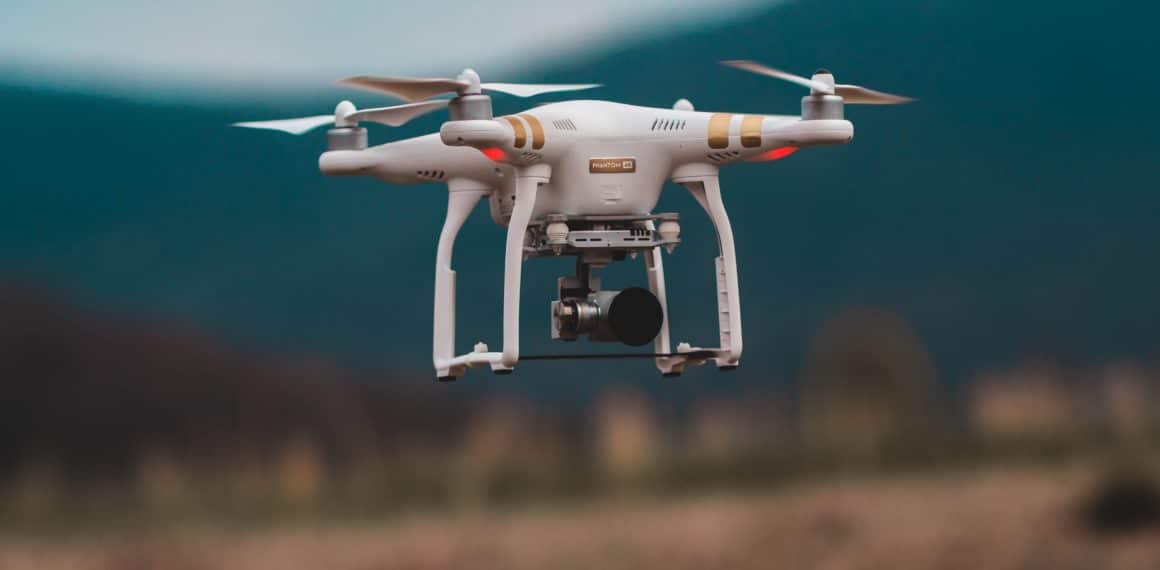
A drone is a versatile aerial device equipped with cameras used in video production to capture breathtaking, sweeping shots from high above the ground.
Drones allow filmmakers to shoot stunning aerial footage, providing unique perspectives that were once limited to expensive helicopter setups.
They are used in various types of productions, from movies and documentaries to commercials and travel videos, offering dynamic and cinematic visuals.
Drones are essential because they add depth and scale to video projects, capturing vast landscapes, cityscapes, and action scenes from angles that were previously inaccessible.
Their agility and ability to manoeuvre in the air allow filmmakers to achieve captivating, bird’s-eye views and dynamic tracking shots.
Drones have revolutionised the way filmmakers tell stories, offering a fresh and immersive visual experience that engages viewers and enhances the overall production quality.
#10 — Editing Software
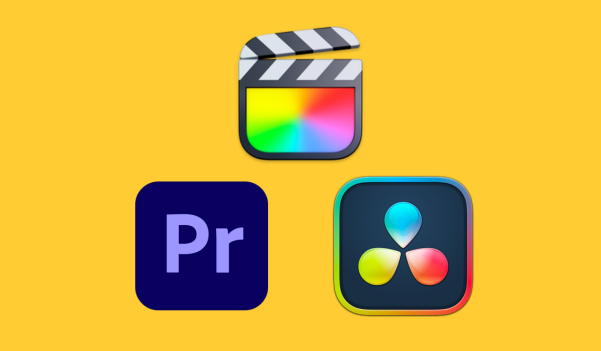
Clockwise from top: Final Cut Pro, DaVinci Resolve and Adobe Premiere Pro
Editing software allows raw footage to be transformed into polished, cohesive films.
It allows filmmakers to arrange, trim, and enhance video and audio clips, adding effects, transitions, and graphics to create a seamless final product.
Editing software is vital because it refines the visual story, ensuring scenes flow smoothly and convey the intended message.
It helps in correcting mistakes, adjusting colours, and integrating various elements, contributing significantly to the overall impact of the video.
Popular editing software options include Adobe Premiere Pro, Final Cut Pro (for Mac users), and DaVinci Resolve.
Keep in mind that video editing software requires a more powerful GPU (Graphics Processing Unit), check them out here.
These tools offer a range of features, from basic editing functions to advanced special effects, providing filmmakers with the flexibility and creative control needed to produce professional-quality videos.
With editing software, filmmakers can shape their raw footage into compelling narratives, enhancing the viewer’s experience and elevating the production’s overall quality.
Conclusions
In the ever-evolving landscape of video production, these tools serve as the pillars of creativity, enabling storytellers to craft immersive experiences.
As technology advances, the fusion of skill and innovative equipment continues to redefine cinematic possibilities.
Armed with these essentials, we hope that you can that captivate, inspire, and leave a lasting impact on audiences.
To start your journey, consider joining our Mobile Videography and Video Editing class.
You can also contact us via the chatbot or simply drop us a DM on our Instagram page.
. . . . .
